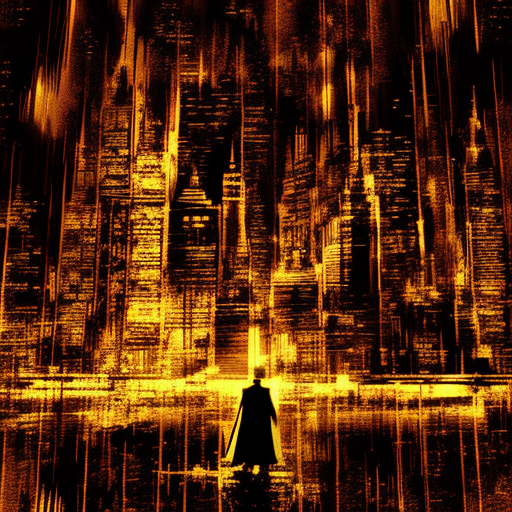One-Line Summary:
Batman: The Dark Knight Returns is a gripping graphic novel that follows an aging Bruce Wayne as he comes out of retirement to fight crime in Gotham City, facing off against old enemies and dealing with the moral complexities of vigilantism.
The Return of the Dark Knight
In Batman: The Dark Knight Returns, written by Frank Miller and illustrated by Klaus Janson, we are transported to a dystopian future where Gotham City is overrun by crime and corruption. Bruce Wayne, now in his 50s, has retired from his crime-fighting alter ego, Batman, after the death of Jason Todd, the second Robin. However, the deteriorating state of the city and the rise of a new gang called the Mutants compel Wayne to don the cape and cowl once again.
The Battle Against Old Foes
As Batman returns to the streets of Gotham, he finds himself facing off against familiar adversaries. The Joker, who has been catatonic in Arkham Asylum for years, awakens and embarks on a killing spree, leaving a trail of chaos in his wake. Batman’s confrontation with the Joker is one of the most intense and psychologically charged moments in the story, highlighting the twisted relationship between the two characters.
Another formidable opponent Batman encounters is Two-Face, the former district attorney Harvey Dent, who has descended into madness and become a violent criminal. Batman’s struggle to save Dent from himself showcases the ongoing battle between justice and vengeance that defines his character.
The Moral Dilemma of Vigilantism
Throughout the graphic novel, Batman grapples with the moral complexities of his vigilantism. He is seen as a symbol of hope by some, while others view him as a dangerous vigilante. The media and the government, represented by a manipulative news anchor and the newly appointed Commissioner Ellen Yindel, respectively, question Batman’s methods and call for his arrest.
Batman’s actions also draw the attention of Superman, who is now a government agent tasked with enforcing the law. The clash between the two iconic superheroes serves as a metaphorical battle between order and chaos, with Batman representing the individual’s fight against a corrupt system.
Key Takeaways:
- Batman: The Dark Knight Returns explores the themes of aging, morality, and the consequences of vigilantism.
- The story delves into the complex relationship between Batman and his adversaries, particularly the Joker.
- It raises questions about the role of superheroes in society and the blurred lines between justice and revenge.
- The graphic novel presents a gritty and dark portrayal of Gotham City, reflecting the societal decay and moral ambiguity of the world.
- Frank Miller’s writing and Klaus Janson’s artwork combine to create a visually stunning and emotionally charged narrative.
“This should be agony. I should be a mass of aching muscle – broken, spent, unable to move. And, were I an older man, I surely would… but I’m a man of thirty – of twenty again. The rain on my chest is a baptism – I’m born again.”
In Batman: The Dark Knight Returns, Frank Miller crafts a compelling story that explores the depths of Batman’s character and the societal issues that plague Gotham City. With its gritty artwork and thought-provoking themes, this graphic novel remains a seminal work in the Batman mythos. It reminds us that even in the face of darkness and moral ambiguity, a hero can rise again to fight for justice.












